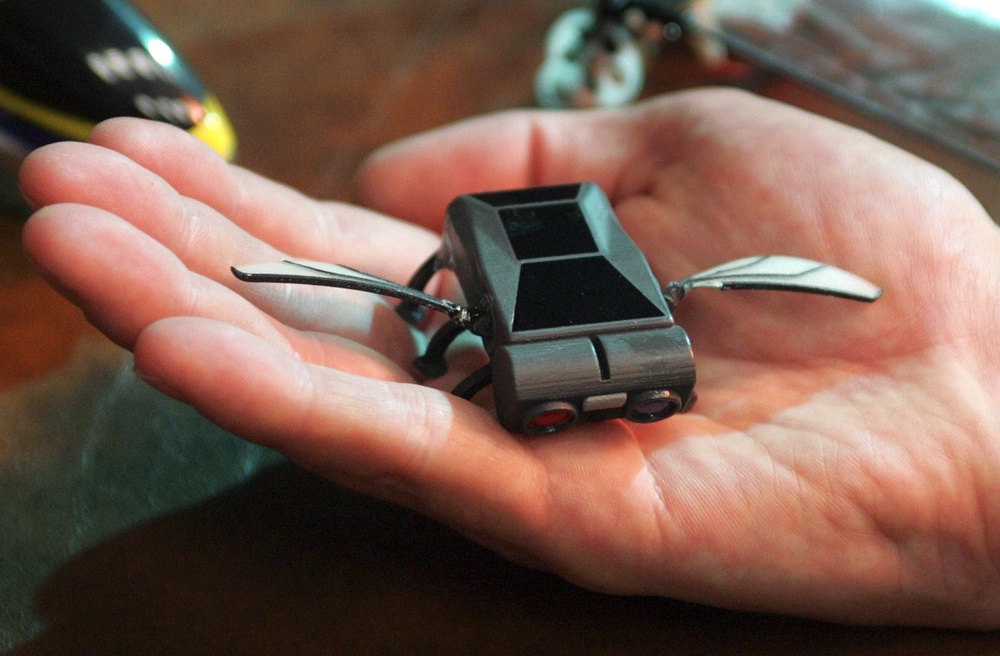
US scientists have devised tiny winged robots inspired by flies that could one day help pollinate crops or aid the search for survivors at collapse sites -- once they get off the leash, that is, AFP reports. The prototypes by researchers at Harvard University weigh 80 milligrams and have managed short controlled flights by flapping their mechanical wings while still tethered to a tiny power cable, the journal Science said this week. The coin-sized robots sport two thin wings that flap 120 times per second. Flight tests have shown they can make basic maneuvers, including hovering in place for about 20 seconds before crashing. Experts are studying real-world flies for clues on how to improve the robots. "Flies perform some of the most amazing aerobatics in nature using only tiny brains," said Sawyer Fuller, a postdoctoral researcher and study co-author. "Their capabilities exceed what we can do with our robot, so we would like to understand their biology better and apply it to our own work." The process of getting the robots to fly has taken 12 years, said Robert Wood, principal investigator and professor at the Harvard School of Engineering and Applied Sciences. "It's really only because of this lab's recent breakthroughs in manufacturing, materials, and design that we have even been able to try this. And it just worked, spectacularly well." The power cable has to stay on until solutions can be found for a portable high energy-density fuel cell that is strong enough and light enough to sustain independent flight, researchers said.





US scientists have devised tiny winged robots inspired by flies that could one day help pollinate crops or aid the search for survivors at collapse sites -- once they get off the leash, that is, AFP reports.
The prototypes by researchers at Harvard University weigh 80 milligrams and have managed short controlled flights by flapping their mechanical wings while still tethered to a tiny power cable, the journal Science said this week.
The coin-sized robots sport two thin wings that flap 120 times per second.
Flight tests have shown they can make basic maneuvers, including hovering in place for about 20 seconds before crashing.
Experts are studying real-world flies for clues on how to improve the robots.
"Flies perform some of the most amazing aerobatics in nature using only tiny brains," said Sawyer Fuller, a postdoctoral researcher and study co-author.
"Their capabilities exceed what we can do with our robot, so we would like to understand their biology better and apply it to our own work."
The process of getting the robots to fly has taken 12 years, said Robert Wood, principal investigator and professor at the Harvard School of Engineering and Applied Sciences.
"It's really only because of this lab's recent breakthroughs in manufacturing, materials, and design that we have even been able to try this. And it just worked, spectacularly well."
The power cable has to stay on until solutions can be found for a portable high energy-density fuel cell that is strong enough and light enough to sustain independent flight, researchers said.


 +7 (777) 001 44 99
+7 (777) 001 44 99















































